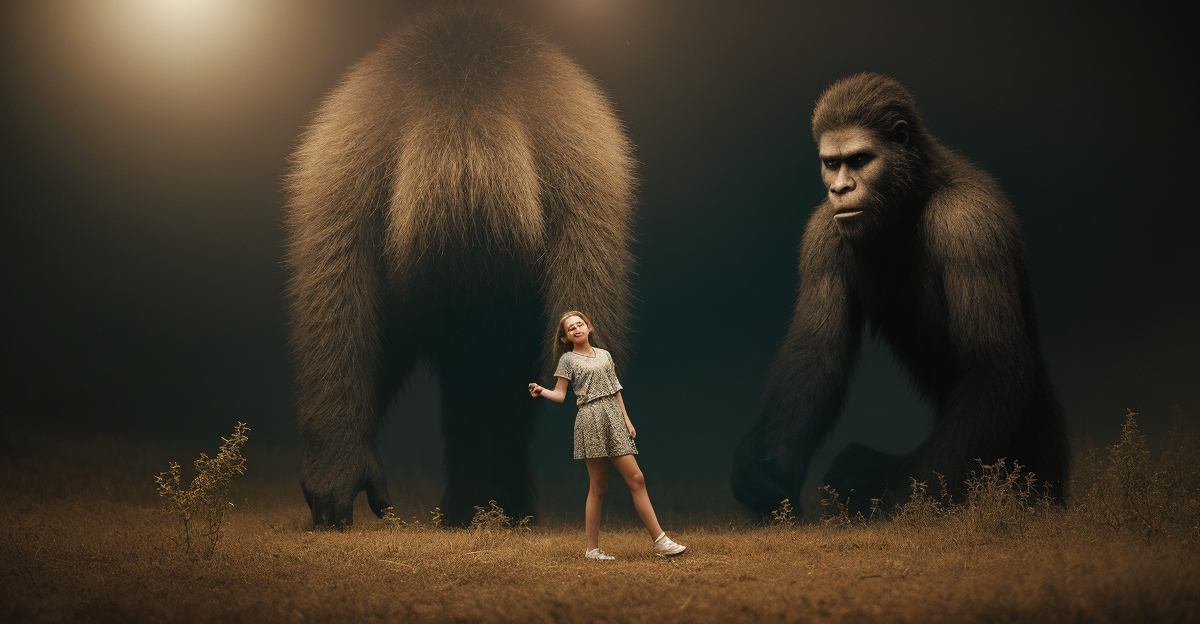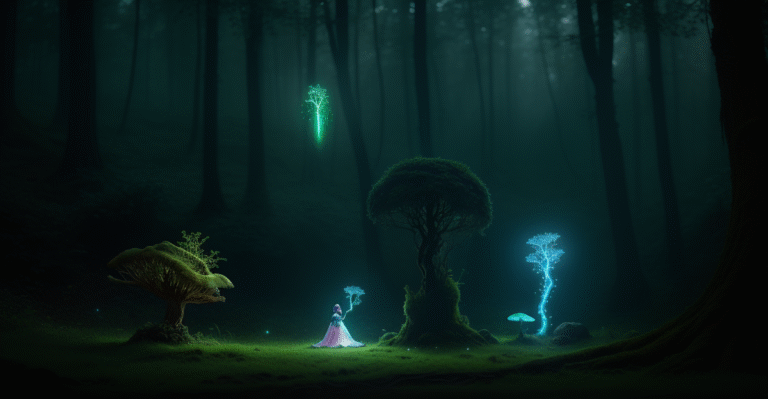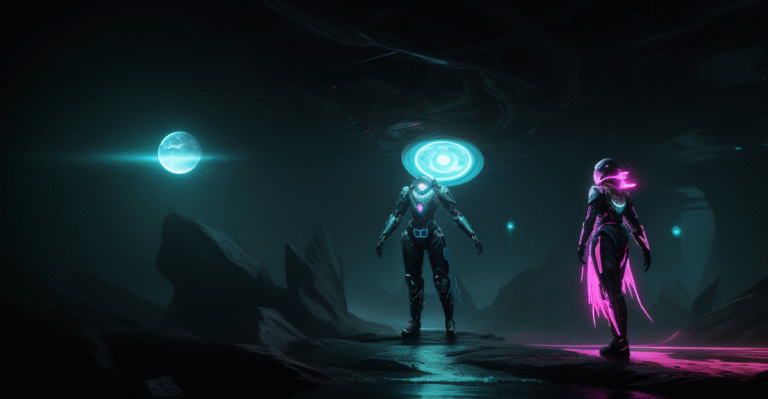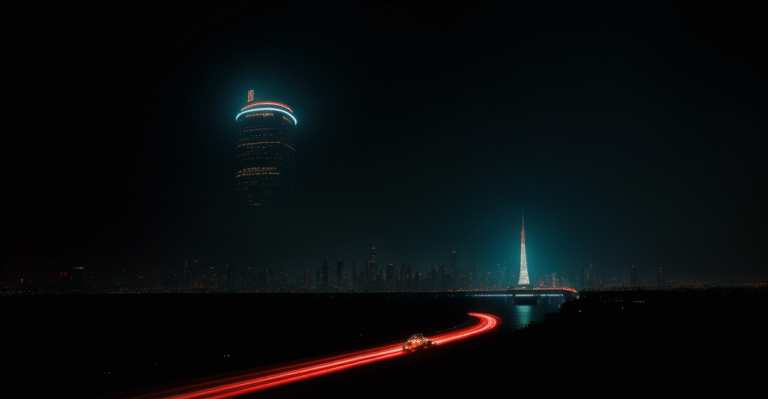
In a world awash with high-resolution cameras and instant global communication, why do cryptid sight
In an age of crystal-clear phone cameras and high-resolution satellite imagery, why does cryptid evidence still look like it was captured with a potato? Let’s explore this strange phenomenon, where blurry pixels become the new blurry photos, and the truth remains tantalizingly out of focus.
Cryptid Digital Footprints: Blurry Pixels, New Blurry Photos?
Hey fellow truth-seekers and digital detectives! Today, we’re diving deep into the murky world of cryptid sightings in the digital age. Forget grainy Bigfoot footage from the ’70s – we’re talking pixelated anomalies, compressed videos, and satellite imagery that raises more questions than answers. Are these digital breadcrumbs leading us closer to uncovering hidden creatures, or are they simply cleverly crafted illusions?
The Paradox of Digital Evidence: Accessibility vs. Authenticity
On one hand, the internet has democratized cryptid hunting like never before. A wealth of potential evidence is now readily available at our fingertips. Social media overflows with blurry photos, shaky videos, and hushed audio recordings, all claiming to capture everything from the elusive Loch Ness Monster to the mysterious Mothman. Dedicated online forums and websites serve as digital watering holes, where enthusiasts gather to share sightings, analyze data, and passionately debate the existence of these creatures. [IMAGE: Screenshot of a cryptid-themed online forum]
But here’s the catch: the very factors that make digital evidence so accessible – its ease of creation and distribution – also render it incredibly vulnerable to manipulation. With readily available software and a dash of know-how, anyone can conjure up a convincing fake. Consider this: a subtly altered photo here, a digitally enhanced video there, and suddenly you have a “genuine” cryptid sighting that has captivated thousands. Remember the “Mel’s Hole” hoax? A simple audio recording and a far-fetched story were enough to enthrall the internet for years, demonstrating the power of suggestion and the ease of deception.
The Ease of Fakery
Creating fake images and videos is now easier than ever. User-friendly photo editing software can effortlessly add blur, distort shapes, and even seamlessly insert entirely new creatures into existing footage. Video editing tools allow for sophisticated compositing and special effects, making it increasingly difficult to distinguish between what’s real and what’s fabricated. The rapid rise of AI-generated content further muddies the waters, raising the bar for discerning truth from fiction and demanding increased scrutiny.
The “Blurry Photo” Problem Transferred to the Digital Realm
Ah, the infamous blurry photo – a cornerstone of cryptid lore since the dawn of photography. But even in our high-definition world, the blurry photo persists, albeit in a new, digital guise. Digital artifacts, such as compression and low resolution, can mimic the ambiguity of traditional blurry photos, obscuring details and hindering identification. That dark, indistinct blob lurking in the distance? Could it be Nessie’s elusive hump… or simply a poorly rendered rock, a victim of digital compression?
Pareidolia: Seeing Faces in the Clouds (and Cryptids in the Pixels)
However, technical limitations aren’t the only culprits. Our brains are naturally wired to seek patterns, even where none exist. This phenomenon, known as pareidolia, leads us to perceive familiar shapes and figures in random stimuli. Think of spotting faces in clouds or the iconic Man in the Moon. This same psychological tendency can lead us to misinterpret ambiguous data in cryptid sightings, transforming a blurry blob into a mythical beast. We often *want* to believe, and our brains are all too willing to fill in the gaps, creating the evidence we’re seeking. [IMAGE: Examples of pareidolia in everyday objects]
Satellite Imagery and the Potential for Remote Cryptid Hunting
Imagine scouring the remote corners of the world for cryptids without ever leaving the comfort of your home. That’s the enticing promise of satellite imagery. Tools like Google Earth and other satellite imagery databases offer unprecedented access to remote and inaccessible areas, allowing armchair explorers to search for signs of the unknown. Picture dense jungles teeming with secrets, unexplored mountain ranges shrouded in mystery, and vast stretches of ocean concealing untold wonders – all potentially harboring undiscovered creatures.
Limitations from Above
However, even satellite imagery has its inherent limitations. Image resolution can be a significant obstacle, making it difficult to identify small or camouflaged creatures lurking beneath the canopy. Cloud cover and other adverse weather conditions can obscure entire areas, rendering the imagery essentially useless. Furthermore, it’s easy to misinterpret natural phenomena from above, mistaking a peculiar rock formation for a mythical beast or a flock of birds for a squadron of flying cryptids. [IMAGE: Example of low-resolution satellite imagery showing a blurry, unidentifiable object]
The Role of Citizen Science and Online Communities
One of the most exciting developments in cryptid research is the rise of citizen science and online communities. These platforms empower enthusiasts from all walks of life to contribute to the search, sharing their knowledge, skills, and unique perspectives. Crowdsourced analysis of potential evidence can be incredibly valuable, bringing diverse viewpoints to bear on complex questions. A fresh pair of eyes, unburdened by preconceived notions, might spot something crucial that a seasoned researcher has overlooked.
Echo Chambers and Misinformation
But online communities also have their potential drawbacks. The echo chamber effect can inadvertently reinforce existing beliefs, leading to confirmation bias and the unintentional spread of misinformation. Within online cryptid communities, it’s easy to find yourself surrounded by like-minded individuals who share your convictions, regardless of the strength of the underlying evidence. This can stifle critical thinking and foster a willingness to accept unsubstantiated claims without proper scrutiny. It’s crucial to approach online discussions with a healthy dose of skepticism and a steadfast commitment to evidence-based reasoning.
So, where does this leave us in our quest for the truth? Digital technology has undoubtedly revolutionized cryptid research, offering unprecedented access to information and powerful analytical tools. But it has also created new challenges, particularly in the critical areas of authenticity and verification. The blurry photo problem hasn’t vanished; it’s simply morphed into the more complex and nuanced blurry pixel problem.
As we continue to explore the digital frontier of cryptid hunting, it’s essential to cultivate our critical thinking skills and approach all evidence with a discerning eye and a healthy dose of skepticism. Remember, the truth is out there… but it’s often cleverly concealed beneath layers of pixels, compression artifacts, and the ever-present allure of wishful thinking.
What are your thoughts? With the rapid advancement of AI, what ethical considerations should govern its use in analyzing potential cryptid sightings?
If you enjoyed this deep dive into the digital world of cryptids, be sure to hit that like button and follow for more explorations into the strange and unexplained!
Enjoyed this? Check out our YouTube channel for video versions!
Enjoyed this? Check out our YouTube channel for video versions!



